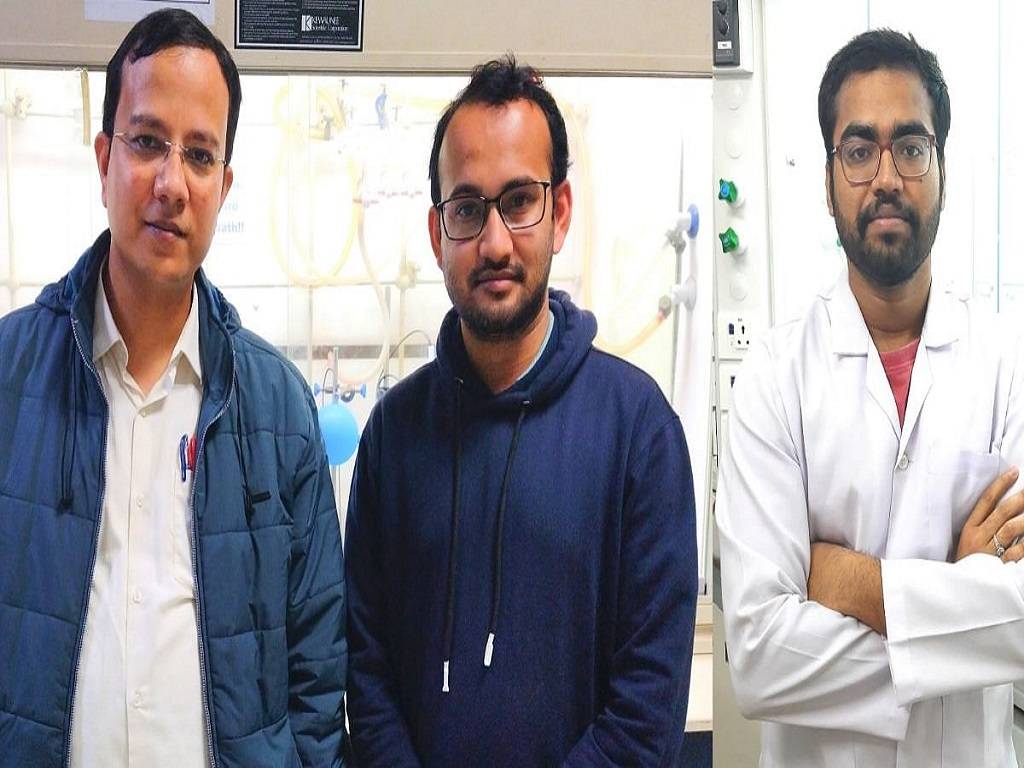
Researchers at the Indian Institute of Science Education and Research (IISERB) in Bhopal have produced organic polymers that they say may remove hazardous micropollutants from water, making it safer to drink.
Dr. Abhijit Patra, Associate Professor in the Department of Chemistry at IISER Bhopal, led the research group that evaluated these polymers in powder form for the removal of polar organic micropollutants on a laboratory scale. He believes that the large-scale production of these materials in partnership with industry partners would pave the way for the real-time removal of harmful polar organic micropollutants from water.
Researchers believe that a teaspoon of the powder of these polymers, known as hypercrosslinked porous organic polymers (HPOPs), will span a huge area. Dr. Abhijit Patra, Associate Professor in the Department of Chemistry at IISER Bhopal, who led the study at the Functional Materials Laboratory, told The Better India, "Per gram of the created HPOPs has an internal surface area of 1000-2400 square meters." The nanometer region of these HPOPs has several small holes. "If we deploy these materials and arrange these nanopores on a flat field, it might cover the space of ten tennis courts," he explains.
According to Dr. Patra, one teaspoon of these organic polymers may remove a variety of water-soluble contaminants from water, including plastic precursors, herbicides, pesticides, endocrine disruptors, antibiotics, steroid-based pharmaceuticals, and ionic dyes. "Based on the experimental findings, we may conclude that 1 teaspoon of HPOPs can remove micropollutants (at ecologically relevant concentrations) from 2 liters of water in thirty seconds." "These HPOPs are recyclable, and there was no degradation in removal efficiency after ten cycles," he explains.
He goes on to explain why he chose to take on this project.
Water Crisis: The Reason behind the project
"In India, the water crisis has worsened in recent decades." The urgent need for portable water compelled us to address this growing issue. For this, we conducted a thorough review of the scientific literature to develop adsorbent materials capable of efficiently removing a variety of hazardous micropollutants from water. To overcome constraints caused by slower micropollutant separation rates, time-consuming regeneration procedures, and so on, we created scalable HPOPs using a simple synthetic protocol. The project began in 2019. "It took nearly three years to finish the full study and publish it in American Chemical Society, ACS Applied Materials and Interfaces, a peer-reviewed Journal” he explains.
Micropollutants removable by HPOPs
The following are some of the most common organic micropollutants discovered in surface water:
-
Pharmaceuticals such as Antibiotics and steroid
-
Industrial Chemicals including Dyes, food additives, endocrine disruptors, and plastic precursors
-
Agriculture waste such as Pesticides, herbicides, and fertilizers
Industrial Use: A Cost-efficient Scale-up
The fundamental benefit of these HPOPs is that they can be made in large quantities utilizing inexpensive and simple aromatic precursors without the need for transition metal-based exotic catalysts. "We employed basic organic building blocks and coupled them with an inexpensive catalyst, anhydrous aluminum chloride (Rs 1/ g), via the solvent molecules (dichloromethane)." "The HPOP with 2D sheet-like shape and a large surface area of 2,400 m2/g was produced using a solvent knitting process," explains Dr. Patra. These HPOPs, he says, offer excellent thermal and hydrothermal stability.
The developed materials have already been put to the test in a laboratory setting. The materials created have a lot of potential for large-scale applications. "With IIT Madras researchers, we are cooperating and expanding the study for real-time use of these adsorbent materials for organic micropollutant separation." This finding can be extremely beneficial to water treatment and water technology companies," he adds.
















